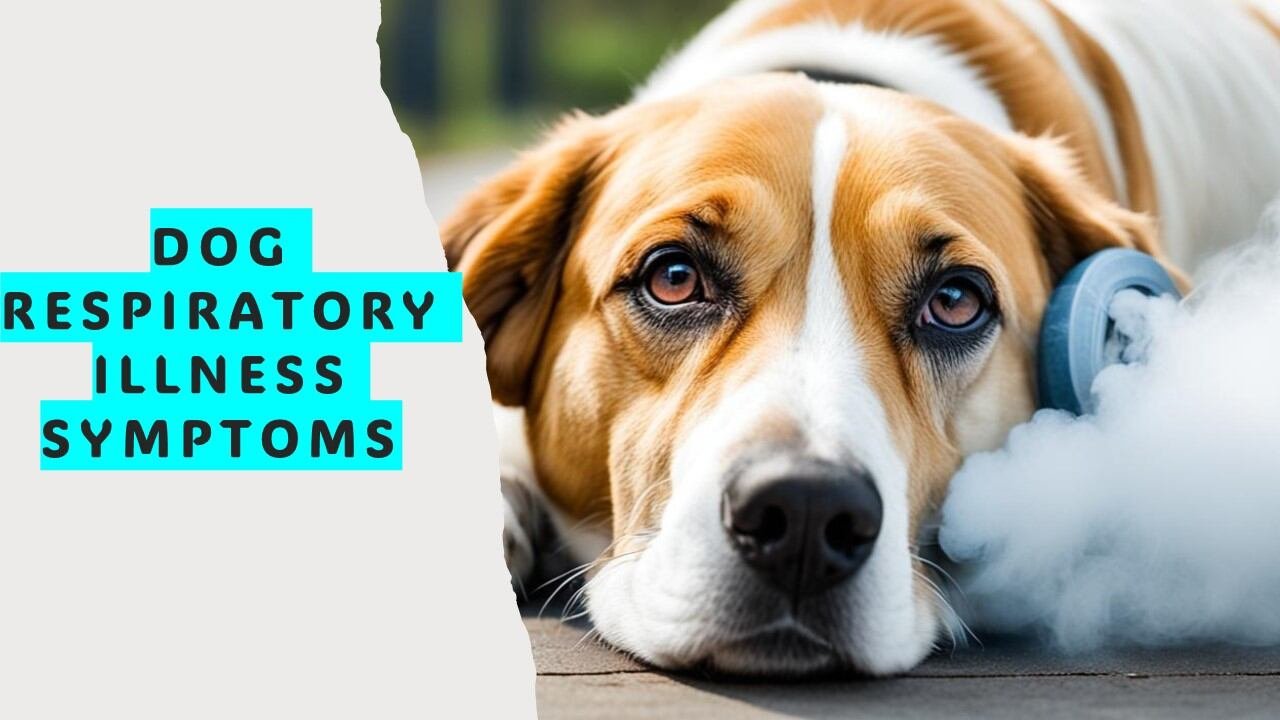Canine respiratory illnesses are becoming more concerning for pet experts. They are seeing more cases that usual treatments don’t fix. These illnesses can make dogs feel unwell and cause big health problems if left alone.
One early sign of a breathing issue in dogs is constant coughing. The cough can be dry or wet, and from soft to loud. Another sign is sneezing, along with a drippy nose or eyes. If your dog breathes quickly or looks like it’s gasping for air, this could be a warning.
Dogs with a respiratory sickness tend to be less active or seem tired. They might not want to eat much, which doesn’t help them get better. Watching for these signs and getting help from a vet fast is very important.
It’s smart to do things that lower the risk of breathing issues in dogs. Try to keep your dog away from places like kennels and parks when they might catch it from other dogs. Also, make sure your pet gets its shots on time to fight off common diseases.
Key Takeaways:
- Coughing, sneezing, and labored breathing are common dog respiratory illness symptoms to watch out for.
- Discharge from the nose or eyes, lethargy, and decreased appetite can also indicate respiratory issues in dogs.
- To prevent respiratory illnesses, avoid high-risk environments and make sure your dog stays up to date on vaccinations.
- If your dog displays any of these symptoms, seek veterinary care for proper diagnosis and treatment.
- Research is ongoing to understand the causes of canine respiratory illness and develop effective treatments.
Common Signs of Respiratory Disease in Dogs
It’s important to spot respiratory infections in dogs early. This helps in treating them effectively. Look out for these signs:
- Persistent coughing
- Sneezing
- Labored breathing
- Nasal or eye discharge
- Lethargy
- Decreased appetite
These could mean your dog has a respiratory illness like CIRDC or pneumonia. If you see these in your pet, get them checked by a vet. Quick treatment avoids complications and speeds up recovery.
Pay attention if your dog starts wheezing along with coughing. This kind of breathing is unusual and might sound off. If you hear wheezing, it’s time for a vet visit.
“Look for silent symptoms like coughing or breathing problems in dogs. Dr. Samantha Evans warns that not doing so can cause more harm and slow recovery down.”
Heavy breathing or panting a lot is a big deal. It could be due to an infection or a more serious issue. Don’t wait if your dog is breathing heavily. Early vet care is key to figuring out and treating the problem.
To keep your dog healthy, watch out for coughing, wheezing, and hard breathing. If you see these signs, visit the vet soon. Swift help gives your dog the best shot at getting better.
Precautions to Prevent Respiratory Illness in Dogs
To stop respiratory illnesses from spreading to dogs, certain steps are very important. These actions can greatly lower the chances of your pet getting a respiratory illness.
- Stay away from risky places. If you’re not sure about other dogs’ health in places like boarding kennels, dog parks, or daycares, avoid them. This cuts down your dog’s risk of catching something from other dogs.
- Avoid sharing dog stuff like bowls, toys, or chews. These things might carry illness-causing germs that spread easily between dogs. Giving each dog its personal things reduces the risk of them getting sick.
- Make sure your dog’s shots are always current. Regular vaccines are key in keeping dogs safe from respiratory diseases. Your vet will guide you on which vaccines are best for your dog. Vaccines give your dog’s immune system a boost against common respiratory bugs.
These easy steps can make your dog’s living space safer and cut down their sickness risk. And it doesn’t just help your pet. It also stops respiratory diseases from spreading to other dogs.
Expert Insight
“Dogs owners need to stay one step ahead in stopping breathing illnesses. By steering clear of risky places, not letting dogs share items, and sticking to vaccination schedules, you can protect your pet a lot.”- Dr. Emily Rodriguez, DVM
Causes and Research on Canine Respiratory Illness

The recent spike in cases of canine respiratory illness is worrying vets. They are hard at work trying to find the causes and the best treatments. At places like Cornell University and the University of New Hampshire, they are investigating this serious issue.
Initial research shows a bacterium, called IOLA KY405, might play a part in these illnesses. It is similar to bacteria that cause respiratory problems in people. But, more studies are needed to be sure and to find how to treat it.
Finding out what causes these illnesses is key to stopping them and treating our dogs right. Scientists aim to better understand these diseases. This way, they can protect our furry friends’ breathing health.
Conclusion
Is your dog at risk of respiratory illness? Stay alert and do all you can to protect your furry friend. If you see any signs of sickness, get help from a vet right away. Make sure your dog’s shots are current and steer clear of risky places.
Doctors are always learning more about how to keep dogs healthy. They are finding new ways to keep our pets safe from sickness. So, with their ongoing efforts, we have hope for a healthier future for our four-legged family members.
FAQ
What are the common symptoms of respiratory illness in dogs?
Respiratory illness in dogs might cause them to cough or sneeze. They could breathe heavily. You might also notice discharge from the nose or eyes. They might seem tired and eat less.
What are the signs of respiratory disease in dogs?
Dogs with a respiratory disease often cough a lot and may sneeze. They find it hard to breathe. You might see fluid from their nose or eyes. They’ll also be less active and might not eat as much.
How can I prevent respiratory illnesses in my dog?
Preventing these illnesses means avoiding places where infection might spread. This includes kennels, parks, and daycare with unknown dog health. Don’t share your dog’s items with others. Keep your dog’s vaccinations up to date.
What is the cause of the recent increase in canine respiratory illness?
The root of this spike is still a mystery. Scientists are looking for answers, checking for new germs. They’re studying a new bacterium named IOLA KY405, which could be the key. It seems to act like a germ that gets people sick.
What should I do if my dog shows signs of respiratory illness?
Seeing signs of breathing problems means it’s vet time for your dog. Fast diagnosis and treatment are crucial. It helps avoid further issues and gets your furry friend back to health sooner.









Leave a Reply